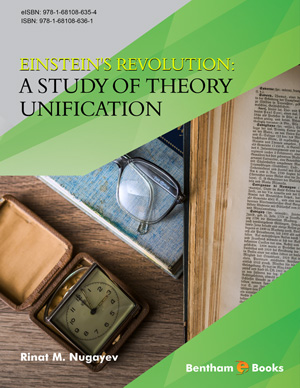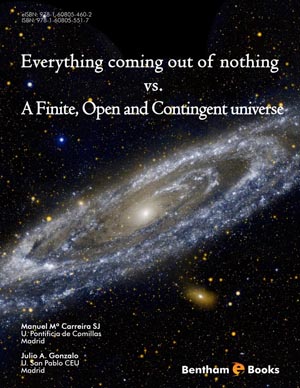Introduction
Page: 1-19 (19)
Author: Peter Enders
DOI: 10.2174/9781681084497119010003
PDF Price: $15
Abstract
The Introduction provides the reader with a more detailed overview over the goal and the approach of this book, including the new features against previous publications. Special attention is paid to the importance of notions and to the relationship between classical and quantum mechanics. Another key topic is Schrödinger’s forgotten 1926 requirements to any path from classical to quantum mechanics. The approach of this book fulfills all four of them, and this will help to overcome several difficulties of interpretation. Mittelstaedt’s “reconstruction” of quantum mechanics is discussed in some detail, because there are several similarities to that approach. The Introduction concludes with the key lines along which this book is organized.
Newton-Eulerian Axiomatic: The Notion of State
Page: 21-58 (38)
Author: Peter Enders
DOI: 10.2174/9781681084497119010004
PDF Price: $15
Abstract
This chapter deals with the all-important notion of state as it is central to all parts of physics. For this book, most important are, on the one hand, the notions of state by Newton and Euler – on the other hand, the notion of state by Lagrange and Laplace used nowadays. Surprisingly enough, Newton and Euler’s notions of state are closer to quantum mechanics than the nowadays’ one. Newton’s axiomatic contains solely the conservation of states (1st and 3rd axioms) and the change of states (2nd axiom). In contrast, the equation of motion is not part of the axiomatic. Euler’s axiomatic contains solely the conservation of states. The change of state (and subsequently the equation of motion) is to be examined according to the problem under consideration. In contrast to Newton’s axiomatic and correcting Bohr’s corresponding claim, Euler’s principles of state change for classical bodies are formulated such, that they can be translated even to quantum-mechanical motion. Their power is also demonstrated through an alternative derivation of Hamilton’s equation of motion.
Alternative Axiomatic: Energy Conservation
Page: 59-73 (15)
Author: Peter Enders
DOI: 10.2174/9781681084497119010005
PDF Price: $15
Abstract
The conservation of the total energy of closed systems belongs to the most general laws of nature. This chapter treats first the common way to the mechanical one starting with Newton’s equation of motion. Then, the possibility to use the energy law as foundation of classical mechanics is explored, notably, Planck’s axioms, Euler’s second equation of stationary-state change, Carlson’s principle of the stationarity of total energy, and Leibniz’s theorem on the conservation of kinetic energy and its dual on the conservation of potential energy. The chapter concludes with considerations about the relationship between energy and extension in configuration space as known from the harmonic oscillator and the Kepler ellipses, and analogous considerations in momentum configuration space.
Possible and Impossible (Momentum) Configurations
Page: 74-77 (4)
Author: Peter Enders
DOI: 10.2174/9781681084497119010006
PDF Price: $15
Abstract
This chapter prepares a smooth way from Eulerian classical mechanics to quantum mechanics. Starting from Helmholtz’s foundation of the energy conservation law using Leibniz’s theorem as described in the foregoing Chapter 2, the configurations a system can (cannot) assume in a given stationary state are explored. The following constraints are taken into account: Newton-Euler’s exclusion principle, d’Alembertian constraints and constraints imposed by conservation laws. The set of possible and impossible momentum configurations is also considered, using Nemorarius’ theorem of the foregoing chapter.
Why Quantum Mechanics?
Page: 79-88 (10)
Author: Peter Enders
DOI: 10.2174/9781681084497119010007
PDF Price: $15
Abstract
This chapter introduces the paradigm ‘quantization as selection problem’ by means of few historical remarks. They include Einstein’s 1907 reasoning, Schrödinger’s 1926 derivation of his wave equation, and Gödel’s theorem and Munchhausen’s trilemma. The latter ones concern questions, which can be posed, but not be answered within CM. Such questions transcendent CM. This book poses the question, how the mechanics of oscillators without turning points looks like. (“oscillators without turning points” means oscillators, which may assume configurations beyond the classical turning points.)
A Hierarchy of Selection Problems
Page: 89-96 (8)
Author: Peter Enders
DOI: 10.2174/9781681084497119010008
PDF Price: $15
Abstract
This chapter brings together Einstein’s 1907 vision of ‘quantization as selection problem’ (see Section 5.1) and our explorations of the possible and impossible (momentum) configurations in Chapter 4. The hierarchy is formulated in terms of the latter ones and consists of Newtonian systems, non-Newtonian classical systems, non-classical systems and non-mechanical systems. These explorations are assisted by an overview on selection problems in classical and quantum theory, by further reasonings for Einstein’s vision and by few explanations about alternative and harmony in Euler’s axioms of classical mechanics. Two fundamental conclusions for non-classical systems can be drawn already at this stage. (i), The notion of path as a point-wise relationship between the configurations and the momentum configurations looses its meaning. (ii), there are no longer coordinates describing the boundaries of a system in (momentum) like the classical turning points of an oscillator.
Non-Classical Representations of Potential, Kinetic and Total Energies
Page: 97-103 (7)
Author: Peter Enders
DOI: 10.2174/9781681084497119010009
PDF Price: $15
Abstract
This chapter presents the first concrete consequences of the foregoing one. The possibility of configurations, x, for which the classical expression for the potential energy, V(x), is larger than the total energy, E, implies, that this expression, V(x), does no longer represent the contribution of the configuration x to the work storage of the system. For this, a ‘limiting function’, F(x), is introduced such, that the non-classical contribution of the configuration x to the work storage, Vncl(x) = F(x)V(x), is smaller than the total energy. The same is done for the momentum configurations and the kinetic energy. Moreover, since there are no trajectories, the non-classical representation of the energies become integral expressions, in agreement with Schrödinger’s vision. Then, the general properties of the limiting functions are deduced. Limiting amplitudes (dimensionless wave functions) are introduced, in order to find an integral relationship between the motions in space and in momentum space, as envisaged by Schrödinger, again.
Conservation of Stationary Quantum States Stationary Schrödinger Equation
Page: 104-109 (6)
Author: Peter Enders
DOI: 10.2174/9781681084497119010010
PDF Price: $15
Abstract
In this chapter, the stationary Schrödinger equations in configuration and momentum configuration spaces are derived from the non-classical expression of the total energy (7.15) found in the foregoing chapter. The new parameter in the Fourier transform is identified as ℏ ≡ ℎ/2. The roles of boundary conditions, probability concepts and independent dynamical variables are shortly discussed.
Non-Classical Selection of the Physical Solutions
Page: 110-127 (18)
Author: Peter Enders
DOI: 10.2174/9781681084497119010011
PDF Price: $15
Abstract
The energy parameter in the stationary Schrödinger equation is primarily continuous. Schrödinger has selected the discrete quantum states by means of boundary conditions. This, however, is mathematics for classical systems like strings and pipes. And, more important, it hides the intrinsic discrete structure of that equation. The latter is represented by the recursion relations between solutions to different values of the energy parameter. These follows from Whittaker’s integral expressions of the solutions and hold true for all solutions, not only for Schrödinger’s eigensolutions. The physically relevant solutions are distinguished by certain mathematical properties as well as physical criteria, in particular, by their compliance with the absence of perpetua mobilia. This non-classical approach is exemplified by means of the model system harmonic oscillator. For this, the chapter starts with a sketch of the classical harmonic oscillator, including quite general topics such as the separation of internal and external system parameters and Huygens’ principle, which will reappear in the quantum realm.
Additional Results
Page: 128-140 (13)
Author: Peter Enders
DOI: 10.2174/9781681084497119010012
PDF Price: $15
Abstract
This chapter contains additional topics of time-independent QM: Critically examinations of the ‘tunnel effect’ and ‘quantum leaps’, the occupation number representation (because of its relationship to the factorization of the classical Hamiltonian), energy versus (effective) extension, and the absence of ‘quantum states at rest’. I hope this helps the reader to grasp something more of the meaning of QM.
Conservation and Change of Stationary States
Page: 142-150 (9)
Author: Peter Enders
DOI: 10.2174/9781681084497119010013
PDF Price: $15
Abstract
The time-independent Schrödinger equation represents a stationary-state equation. The stationary wave functions obtained so far are time independent. Their time-dependence is obtained by means of rather general arguments. Then, stationarystate functions are found. The next step in Newton’s and Euler’s representations of classical mechanics is (to derive) the equation of change of stationary-states. Here, Euler’s principles of stationary-state change are generalized to quantum-mechanical systems. This enables us to derive the quantum-mechanical equation of change of stationary-states. The time-independent Schrödinger equation, i.e, the equation of motion will follow in the next chapter.
Equation of Motion
Page: 151-158 (8)
Author: Peter Enders
DOI: 10.2174/9781681084497119010014
PDF Price: $15
Abstract
Having got the quantum-mechanical equation of change of stationary states, it is rather straightforward to derive the quantum-mechanical equation of motion. As anticipated in the foregoing chapter, this is the time-dependent Schrödinger equation. Moreover, Huygens’ principle is shown to apply to QM, as obtained by Feynman in another way.
Conservation Laws
Page: 159-165 (7)
Author: Peter Enders
DOI: 10.2174/9781681084497119010015
PDF Price: $15
Abstract
The conservation law for the weight (probability) is sketched along Schrödinger’s (1926) standard way, where ΨΨ represents the weight (probability) density. In contrast, there are various expressions for the energy density. I pose the following requirements: (i), The change of total energy should be proportional to ∂Vext/ ∂t, as within CM (see principle CS1 in Subsection 2.5.4); (ii) the current (flux) density should exhibit the hydrodynamic form ‘density times velocity’
Applications
Page: 166-175 (10)
Author: Peter Enders
DOI: 10.2174/9781681084497119010016
PDF Price: $15
Abstract
This chapter considers, (i), the time-dependent ‘tunnel effect’ (as generalization of the stationary one in Section 10.1) and, (ii), coherent states as providing a smooth transition to the classical limit case, Fcl(x, t) = xchδ(x − x(t)), Gcl(p, t) = pchδ(p − p(t)). The reader is encouraged to study several ansatzes for the propagation of a time-dependent wave function into the classically forbidden region. Schrödinger’s 1926 calculations on the classical limit of wave mechanics by means of the invented by him coherent wave functions are completed for the harmonic oscillator. Here, the physical meaning of the weight function FE (x) (see Chapter 3) is most helpful, again.
General Considerations
Page: 176-178 (3)
Author: Peter Enders
DOI: 10.2174/9781681084497119010017
PDF Price: $15
Abstract
This chapter introduces the issue of symmetry through rather general notions and theorems. I propose a symmetry theorem for the stationary-state functions that underpins their importance.
Space-time Symmetries
Page: 179-198 (20)
Author: Peter Enders
DOI: 10.2174/9781681084497119010018
PDF Price: $15
Abstract
This chapter is devoted to the perhaps simplest kind of symmetry. The manner of deriving QM from CM presented above allows to equal the space-time symmetries of the quantum-mechanical state functions to that of the classical ones. On this basis, spatial and temporal symmetries of the wave functions are dealt with, (i), in general (Wigner’s theorem), (ii), w.r.t. space inversion (parity), (iii) external time periodicity (Floquet theory), (iv), spatial periodicity (Bloch’s theorem), (v), internal time periodicity (time crystals), (vi), combined space-time periodicity (choreographic crystals). The symmetry breaking of homogeneity of space during freezing and the corresponding Nambu-Goldstone modes1 are only mentioned here.
Gauge Symmetry
Page: 199-212 (14)
Author: Peter Enders
DOI: 10.2174/9781681084497119010019
PDF Price: $15
Abstract
Gauge symmetry respectively gauge invariance plays a crucial role in modern quantum field theory. Historically, the first locally gauge-invariant equations of motion are Maxwell’s original equations for the electrical charges and currents and the electromagnetic fields created by them. In order to keep the relation to classical mechanics as close as possible, this chapter starts with a critical examination of global gauge invariance, basing on Helmholtz’s interpretation of the potential energy as “disposable work storage”. Then, Helmholtz’s explorations of the relationships between forces and energies are sketched and extended. Their generalization to quantum mechanics leads to the gauge invariance of the stationary and timedependent Schrödinger equations. An important application is the Ehrenberg-Siday- Aharonov-Bohm effect and its gravito-electromagnetic analog. For the sake of the unity of physics, it is shown, how the (gravito-)electromagnetic equations can be deduced. Here, Newton’s imaginations about the field of gravity are also exploited.
Permutation Symmetry
Page: 213-224 (12)
Author: Peter Enders
DOI: 10.2174/9781681084497119010020
PDF Price: $15
Abstract
The permutation symmetry of Newtonian stationary-state functions – such as the total momentum and the Hamiltonian – is crucial for correct state counting in classical statistical mechanics, but plays virtually no role for classical many-body systems. In contrast, it yields novel effects for quantum many-body systems of equal/identical particles. In order to avoid the misunderstandings Jaynes (1992) has rightly stressed, basic notions, such as equal and identical particles, (in)distinguishability and exchangeability (the really relevant notion) are discussed first within classical mechanics. Then, they are applied to the weight (limiting) functions. The permutation symmetry of the wave functions follow largely from that of the weight functions. The different effects for bosons and fermions are mentioned and illustrated. For the generalization towards anyons and the fractional quantum Hall effect, some ideas for further exploration are proposed. Entanglement is treated as a consequence of the conservation laws, in particular, for the angular momentum.
‘Aequat Causa Effectum’ Spherically Symmetric Potentials versus Non-spherically Symmetric Orbits and Orbitals
Page: 225-244 (20)
Author: Peter Enders
DOI: 10.2174/9781681084497119010021
PDF Price: $15
Abstract
‘Aequat causa effectum’ (the cause is equal to the effect) is an old metaphysical rule, which seems, however, to be violated for the single trajectories in spherically symmetric force fields, as the Kepler orbits are not spherically symmetric. The reason for the latter is the lower symmetry of the initial conditions. The rule is reestablished, if appropriate sets of trajectories (i.e, sets of initial conditions) are considered. The corresponding hodographs are also explored. The fact, that the Kepler orbits are plane, is derived by means of logical and symmetry arguments, without using angular momentum conservation. Spherically symmetric sets of Bohr orbitals are constructed by means of a sum rule for the spherically harmonic functions (Unsöld’s theorem). This results in a less known similarity between classical and quantum mechanical systems. Metaphysical rules do not solve concrete physical problems, but encourage to explore them more profoundly.
Introduction
Page: 245-246 (2)
Author: Peter Enders
DOI: 10.2174/9781681084497119010022
PDF Price: $15
Coupled Classical Oscillators
Page: 247-250 (4)
Author: Peter Enders
DOI: 10.2174/9781681084497119010023
PDF Price: $15
Abstract
Since this part Field Quantization as Selection Problem attempts to carry over the quantization of point-mechanical systems to that of classical fields, it begins with a chapter about coupled harmonic oscillators being the classical basis of phonons, the quantum particles of sound. After establishing the Newtonian equations of motion, the eigenmodes are calculated as a Toeplitz eigenvalue problem. Finally, the canonical momentum and the Hamiltonian are provided.
From Chains to Strings: Limit Transition to the Continuum
Page: 251-255 (5)
Author: Peter Enders
DOI: 10.2174/9781681084497119010024
PDF Price: $15
Abstract
The next step is the transition to the continuum being dealt with in this chapter. The Newtonian equations of motion become d’Alembert’s wave equation, the energies and thus the Hamiltonian become functionals. The question, which field takes over the role of the free body, is examined by means of standing waves.
Quantization of the String
Page: 256-260 (5)
Author: Peter Enders
DOI: 10.2174/9781681084497119010025
PDF Price: $15
Abstract
As an intermediate step, this chapter describes the quantization of the mechanical string. In order not to deal with the derivative in the potential energy density, a spatial Fourier transform is performed. Then, the procedure is quite analogously to the point-mechanical case, because the length of the string provides an extrinsic length parameter. Nevertheless, energy quanta, hω, emerge.
Quantization of the Free Electromagnetic Field
Page: 261-268 (8)
Author: Peter Enders
DOI: 10.2174/9781681084497119010026
PDF Price: $15
Abstract
In contrast to the string, the free electromagnetic field has not got an extrinsic length parameter. However, the wave number provides an intrinsic length parameter. Energy quanta, hω, emerge only for the transverse field components, for which a potential energy analogously to that of the harmonic oscillator acts. The analog to the longitudinal field modes is the free particle.
Summary and Conclusions
Page: 271-280 (10)
Author: Peter Enders
DOI: 10.2174/9781681084497119010027
PDF Price: $15
Abstract
This chapter summarizes the main results of this book and draws some conclusions. Special attention is paid to the axiomatic basis, i.e., to Schrödinger’s requirements and Hertz’s program, which lead to the novel paradigm of quantization as selection problem (rather than eigenvalue problem). Both ones are realized by means of limiting (Schrödingerian weight) functions, which guarantee the validity of the energy conservation law in the classically forbidden regions of configuration and momentum configuration spaces (e.g, beyond the turning points of classical oscillators). Further topics are the separation of external and internal parameters as initiated by Euler, the differences between classical and quantum wave equations, causality and determinism, hidden variables, symmetry and field quantization.
Open Questions – Suggestions
Page: 281-284 (4)
Author: Peter Enders
DOI: 10.2174/9781681084497119010028
PDF Price: $15
Abstract
This chapter summarizes open issues and suggests further explorations. For example, how do quantum particles propagate, and how to deal with time as a classical parameter?
Points of Extension or Generalization
Page: 285-292 (8)
Author: Peter Enders
DOI: 10.2174/9781681084497119010029
PDF Price: $15
Abstract
Accordingly to the purpose of this book, it concludes with a prospect on extensions and generalizations. Explicitly mentioned will be special relativity, spin, quantum electrodynamics and dissipative systems.
References And Further Reading
Page: 293-346 (54)
Author: Peter Enders
DOI: 10.2174/9781681084497119010030
Introduction
This unique textbook presents a novel, axiomatic pedagogical path from classical to quantum physics. Readers are introduced to the description of classical mechanics, which rests on Euler’s and Helmholtz’s rather than Newton’s or Hamilton’s representations. Special attention is given to the common attributes rather than to the differences between classical and quantum mechanics. Readers will also learn about Schrödinger’s forgotten demands on quantization, his equation, Einstein’s idea of ‘quantization as selection problem’. The Schrödinger equation is derived without any assumptions about the nature of quantum systems, such as interference and superposition, or the existence of a quantum of action, h. The use of the classical expressions for the potential and kinetic energies within quantum physics is justified. Key features: · Presents extensive reference to original texts. · Includes many details that do not enter contemporary representations of classical mechanics, although these details are essential for understanding quantum physics. · Contains a simple level of mathematics which is seldom higher than that of the common (Riemannian) integral. · Brings information about important scientists · Carefully introduces basic equations, notations and quantities in simple steps This book addresses the needs of physics students, teachers and historians with its simple easy to understand presentation and comprehensive approach to both classical and quantum mechanics..


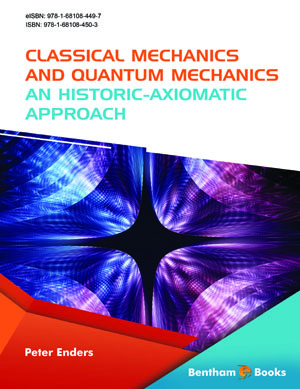


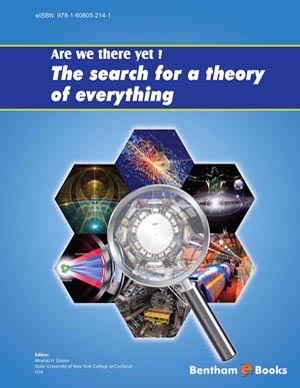

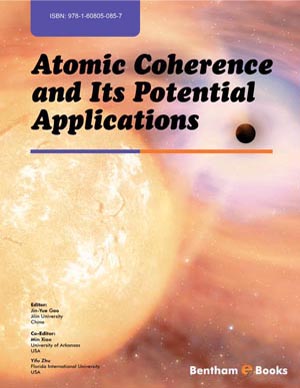
.jpg)



